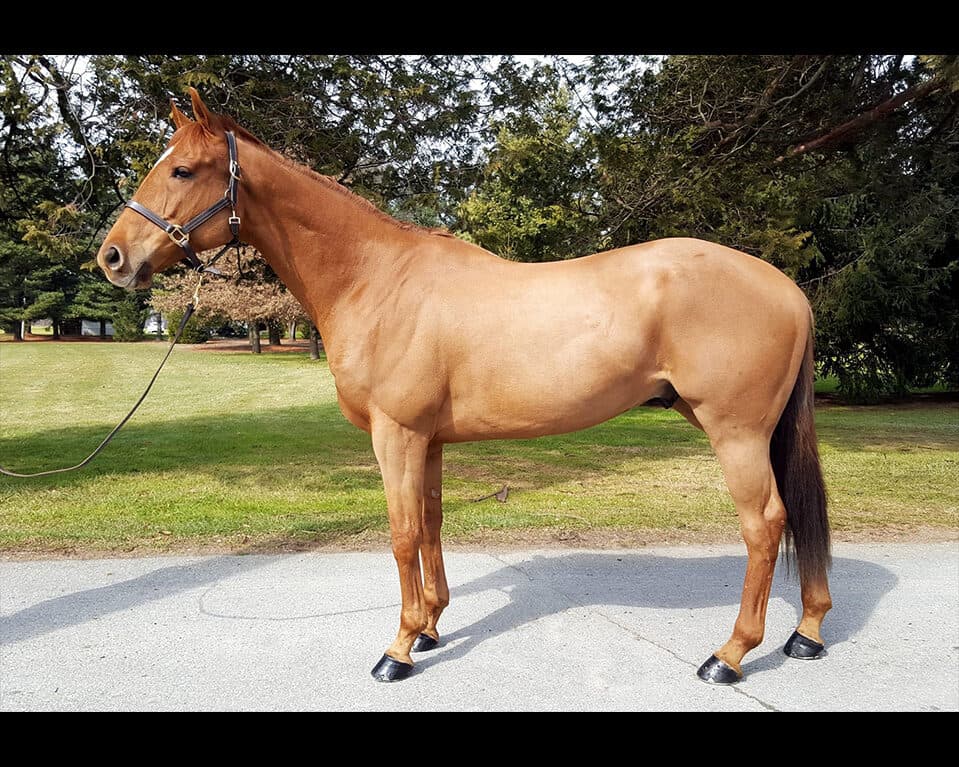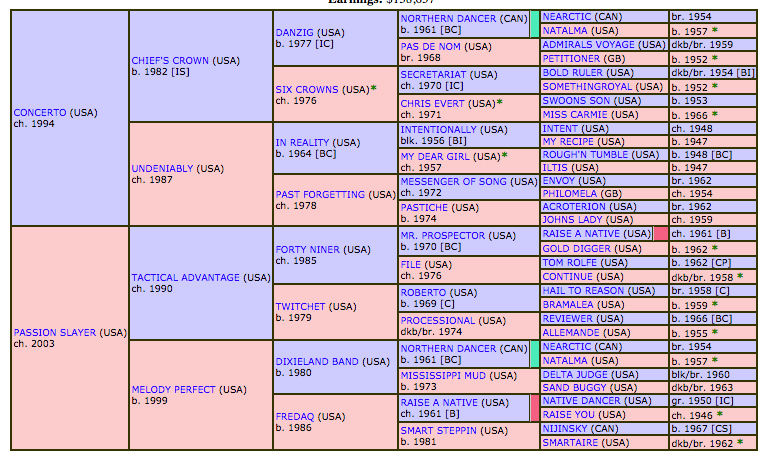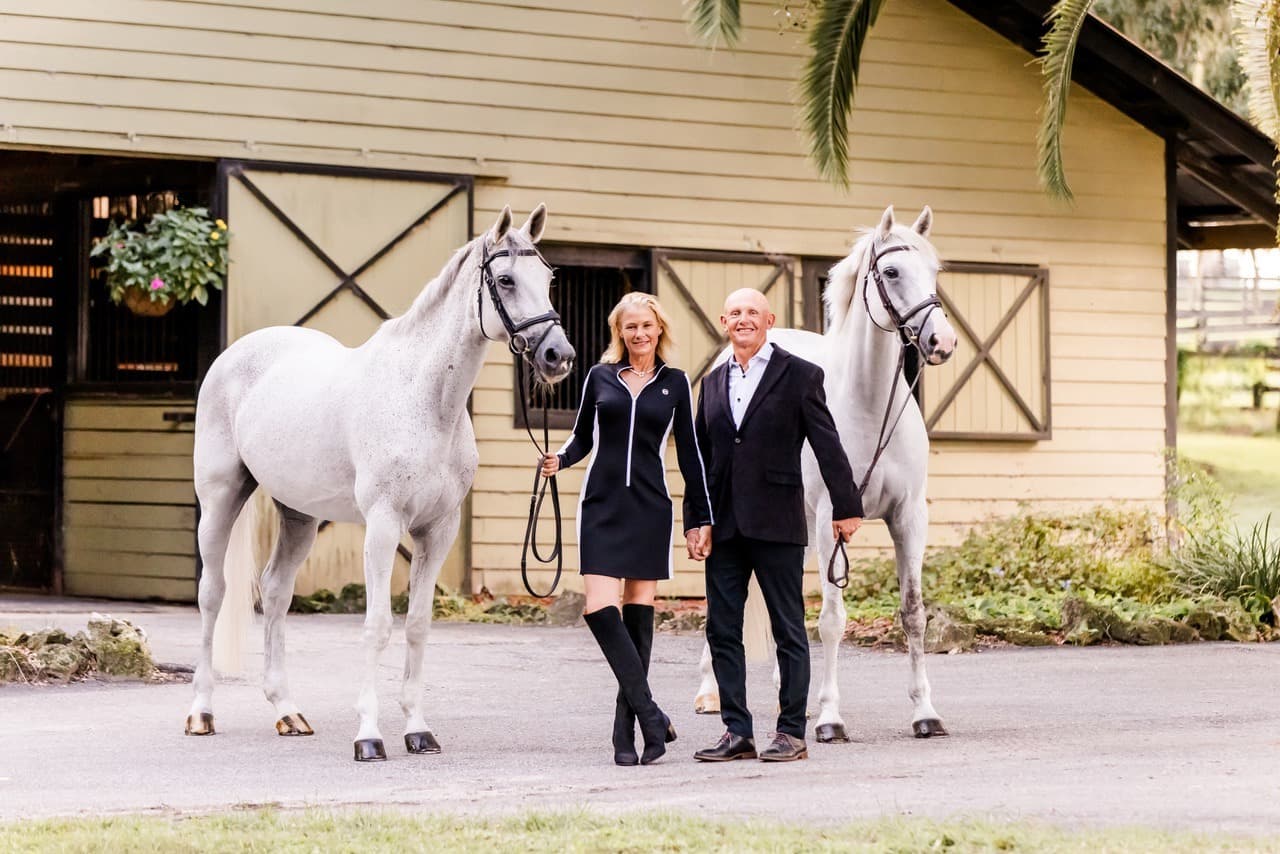OTTB Critique Presented by Athletux: Symphonic Hero

In this series, the United States Eventing Association (USEA) is partnering with Athletux to critique your off-the-track Thoroughbred (OTTB) eventing prospects. Professional riders and trainers will share their insights into each OTTB's pedigree, racing history, and conformation. Would you like to have your off-the-track Thoroughbred featured in the next edition of OTTB Critique presented by Athletux? We are looking for our next horse! Email your horse's photo and a video clip to [email protected].
Thoroughbreds make up a large number of horses in the eventing community, and the efforts to market former racehorses as sport horses are only causing that percentage to grow. Thoroughbreds have proven themselves at every level, with horses like Donner and Anthony Patch leading the charge for OTTB’s at the highest level of the sport. The athleticism and heart of thoroughbreds makes them wonderful candidates for eventing, and with so many rehoming programs at a rider's disposal, finding the perfect off-the-track partner is often only a matter of performing a quick internet search. Though the young OTTBs often get the most attention, there’s something to be said about a “war horse” and their ability to succeed in this sport.
This month, Jen McFall of Dragonfire Sporthorses take a look at one such horse. Dragonfire Farm not only houses a premier eventing training and lesson program, but also is home to a successful breeding program, so conformation and pedigree examination are an important area of Jen’s expertise. “I am a true fan of the Thoroughbred and I love spending time studying bloodlines and observing their conformation and athleticism. Although I mostly concentrate on younger prospects, I am fascinated by the older racehorse that keeps at it year after year.” Enter Symphonic Hero (Concerto X Passion Slayer), a 2008 gelding recently retired after an impressive 59 starts.
The chestnut gelding is owned by Katherine Matson and was purchased for a second career as an event horse. Before beginning her critique, Jen mentioned some of the positives of buying a proven winner that might have a few more miles under his belt than his younger counterparts. “The war horse, one with 50 or more starts, has displayed an obvious soundness that will serve him well in his new career of eventing, another rigorous sport. Nobody does a job for that long without a desire to please people, and that is a key element in developing the relationship required between horse and rider in eventing. The war horse is an obvious athlete who is comfortable in his own skin and with travel and competition. I always like to see a horse that has won in its race career, because let’s admit it, we all like a blue ribbon every once in a while, and winners are winners. If they wanted to be competitive in racing, you can bet they will continue to be competitive in their next career.”
Jen begins her examination of every horse by looking at the overall picture. “This horse has a pleasant overall look, albeit not particularly uphill. He stands with a significant amount of his mass in front of the saddle and a little over his shoulder. This makes him a little heavier in front and limits his chances of moving up the levels in eventing.” Jen is careful to remark that this balance issue should not be a disqualifying factor, especially if someone is looking for a horse that will be competitive in local events or at the lower levels. “That being said, he has been trained and rewarded for propelling all of his weight forward for many years and may learn over time to balance more of his weight on his hind end.”
Moving on to his limbs, Jen stated that in the case of looking at an older horse that has proven its soundness overtime, conformation can be misleading. “I found his pasterns to be a bit long, but considering his racing career, I would bet that it hasn’t played much of a factor for him and he will continue on for an acceptable amount of time. His long forelimb and short cannon could be the saving grace in this matter and has counteracted the long pastern.” Jen also admitted that his back is a bit longer than she finds ideal for her mounts, but again stressed that for the right person and with proper conditioning to strengthen his topline, that a long back is in no way a deal-breaker for her.
Despite some minor conformation issues, Jen reminds readers that a beautiful package is nice, but it’s truly what’s on the inside that means the most. “This horse has an eye that suggests a kind and happy attitude. Any time I shop for a horse, the look in a horse’s eye usually gives me my answer on whether or not I want it. It’s very easy to get excited about a beautiful and athletic prospect that could carry you to Olympic glory, but if they do not have the right temperament for retraining and the desire to please, all of that talent doesn’t mean a thing.”

Jen also took a look at Hero’s pedigree to provide some insight into what lines she looks for in an OTTB. “Pedigree is not very important when considering a war horse, though it is always interesting to see. This horse has some familiar names that appear in top event horses; most notably, Danzig on top and Northern Dancer, Raise A Native, Hail to Reason, and Nijinsky on the bottom.”
While it can be difficult to judge a horse by photos alone, videos can give shoppers a better idea of the horses aptitude for a new discipline. “What struck me most in watching his video was his curious nature and his desire to learn a new game. This shows a strong aptitude for retraining as an eventer, as event horses have to learn so many different skills to be successful. Although he does not show the potential for being an upper level horse, he does show the attitude required for being a very good lower level mount under the right guidance. His talent is sufficient and I would be remiss to underestimate a horse that wants to learn and succeed. I am tempted to believe that he has a strong desire to please and could be someone’s perfect partner in crime.”
Overall, a proven winner on the track can be the perfect partner for someone who might not have four-star ambitions, and there is certainly room in the sport for a horse with years of success on the track. Jen leaves us with some great words of advice for anyone looking to add an OTTB to the barn; “Although I advocate for adopting retired race horses, I do have to caution those considering such an endeavor that getting professional guidance will make a racehorse’s transition into the sport world more successful and possibly less frustrating for both horse and rider.”Jen owns and operates Dragonfire Sporthorses in Wilton, CA with her husband, Earl. Their successful eventing program features several great thoroughbreds, proving the breed’s talent for the sport when given the right foundation and training.














